Last updated on May 13th, 2023
With distinctive long ears, and short tails, rabbits are small mammals that are found on all continents expect Antarctica. There are 29 species of rabbits. With these interesting facts about rabbits, let us learn about their physical features, feeding habits, reproduction, behaviour, and more.
Physical Features
1. Size and Weight
Rabbits are small mammals with long ears and powerful hind legs. Most rabbits are between 13 and 20 inches long. Adults weigh between 2.4 and 5.5 pounds.
2. Exceptional Jumpers
Rabbits can easily jump over 2 feet high. The best of them, Mimrelunds Tosen of Denmark, was able to jump over 3 feet (39.2 inches) for the world record.
3. Panoramic Vision
Rabbits use their nearly 360° panoramic vision to effectively avoid predators in the wild. Their only blind spot is a small section in front of their nose. They can see far objects better than nearby objects.
4. Sense of Smell
A rabbit’s sense of smell is even better than their eyesight. They are likely to smell the presence of a predator before they see it.
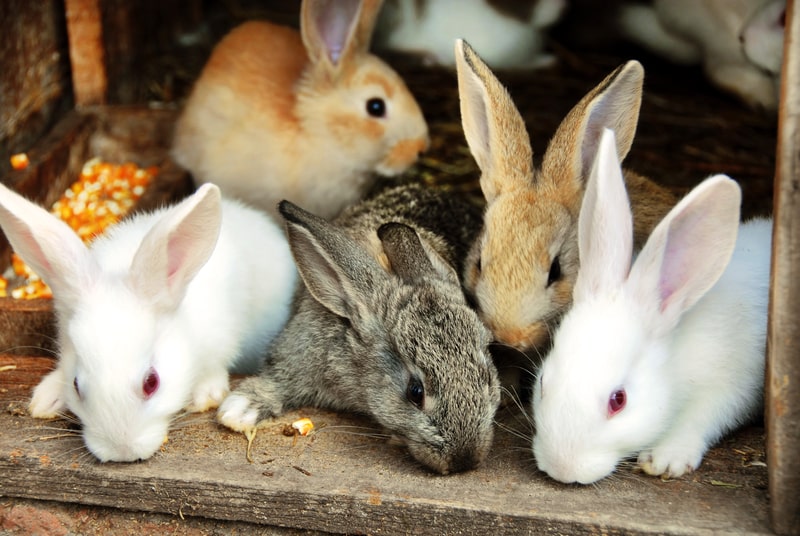
5. Sound Detection
Rabbits have ears that can grow up to 10 centimeters! Rabbit ears can move independently by 180 degrees, enabling them to hear from two directions at once. They can detect sounds from far away, including high frequencies that humans can’t hear.
6. Rabbit Lifespan
A pet rabbit can live for about 5 to 10 years depending on the breed. Sterilized rabbits, referring to those who are spayed or neutered, can often live up to 12 years.
7. Rabbit Speed
Cottontail rabbits can run at a speed of 18 miles per hour (29kph). They move in a zigzag pattern to confuse their predators and make themselves harder to catch.
8. Rabbits vs Hares
These belong to the same family but are different species. Hares tend to have larger bodies and longer ears. They are also less social than rabbits and live completely aboveground.
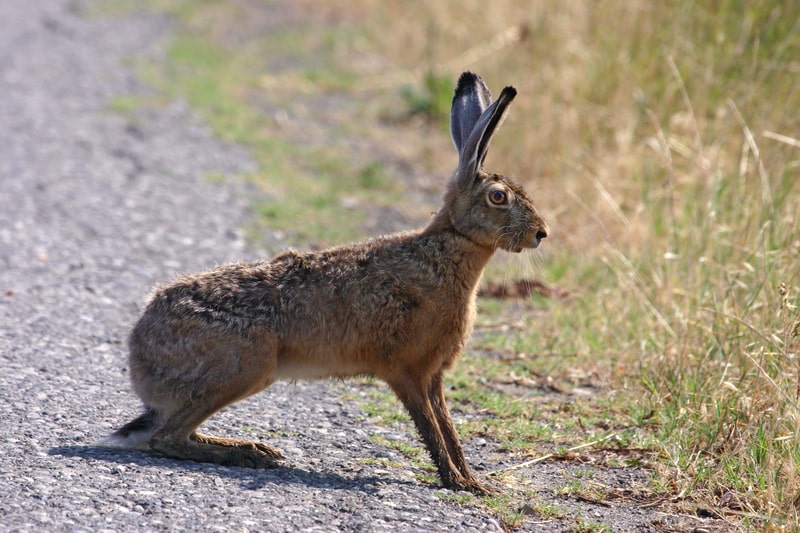
9. Rabbit Tails
Rabbits have small but functional tails. These are used to distract predators during a chase and to signal danger to other rabbits. They can also use their tails to communicate emotion.
10. Largest Rabbit
The largest rabbit of all time comes from Minorca in Spain. Nuralagus Rex existed 3-5 million years ago based on the fossil records. Average weight is 12 kg, but some are as heavy as 23 kg.
11. Longest Rabbit Fur
Franchesca the Rabbit has the longest fur on record at 14.37 inches (36.5 cm). Her owner is an expert on the breed called English Angora rabbit, which is often mistaken for Pekingese dogs.
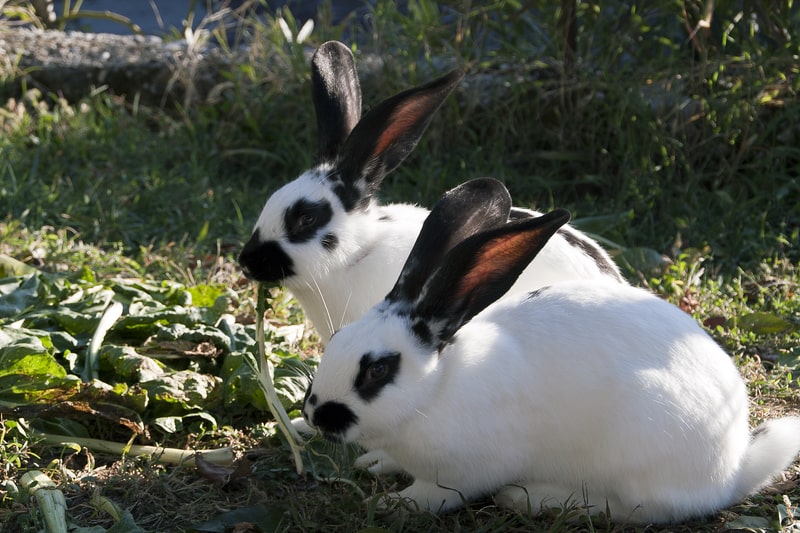
Feeding Habits
12. Expelling Food
Humans and some other animals can puke out anything that upsets their stomach. However, rabbits are not able to vomit food, so they must be careful about what they eat.
13. Herbivore Diet
Rabbits eat hay, grass, and other plants. They need a steady supply to stay healthy and full of energy. Pet owners can supplement this with rabbit pellets, vegetables, and fruits.
14. Digestive System
Rabbits and horses have similar digestive systems. They both have an organ called the cecum at the end of the tract. This is filled with microbes that break down the food fibers. Rabbits can’t fully digest their fiber-rich food in one pass. It might be hard to imagine, but they eat their own soft poop pellets to digest them a second time and properly absorb the nutrients.
15. High-speed Chewing
Rabbits can chew 120 times a minute, allowing them to partially break down their food quickly before this goes into their stomach.
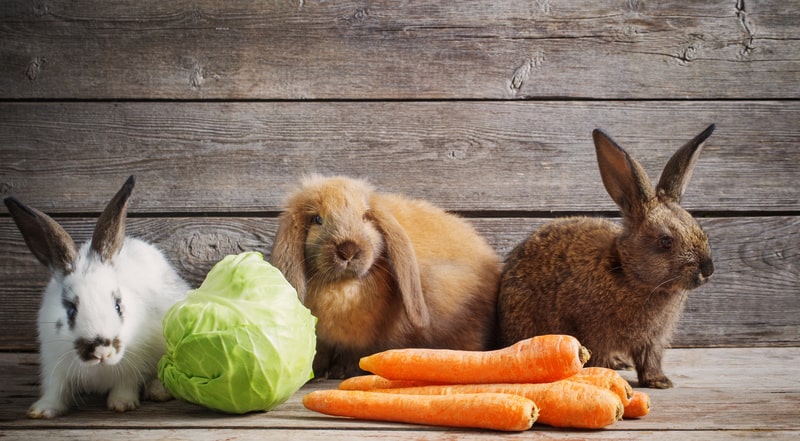
16. Rabbits and Carrots
Rabbits are often portrayed as carrot-loving animals but they can’t live on these alone. Only small amounts are recommended because carrots are high on natural sugars that can cause tooth decay in rabbits.
17. Careful Consumers
Before grazing in the open, rabbits survey the area and formulate an exit strategy. They may seem preoccupied with food but they are always monitoring. At the first sign of danger, they will dash towards a predetermined path.
18. Crepuscular Creatures
Just like house cats and deer, rabbits are crepuscular creatures. This means that they are most active during twilight hours: dusk and dawn. They spend most of the day sleeping. It may not always be obvious because rabbits can sleep with their eyes open for faster response to danger.
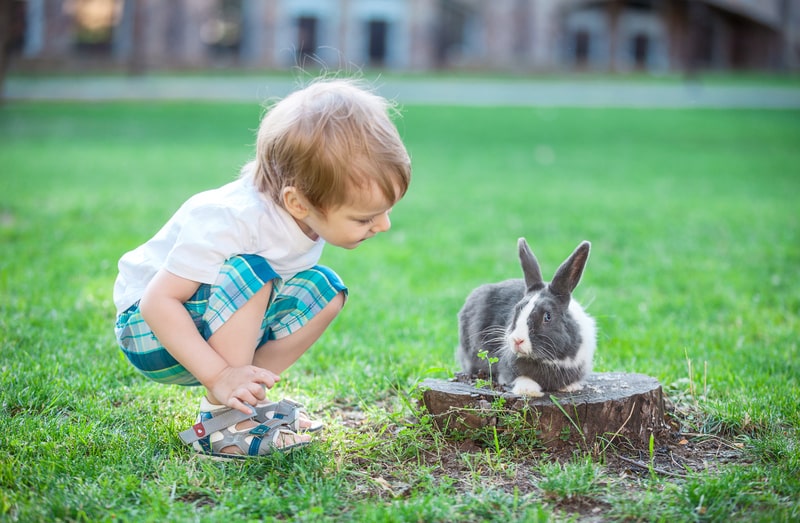
19. Longest Rabbit
The world’s longest rabbit is “Darius”, a Continental Giant from the UK measuring 4 feet and 3 inches long. It weighs just over 50 pounds from an annual diet that includes 700 apples and 2,000 carrots.
20. Rabbit Teeth
Their teeth never stop growing. In the wild, their penchant for chewing on barks and branches keep these short. In captivity, they can chew on hay, wooden blocks, or chew toys to get the same effect.
Reproduction
21. Rabbit Terms
A female rabbit is called a doe, while a male is called a buck — just like deer. A baby rabbit is referred to as a kit. When discussing a group of rabbits, call them a herd.
22. Rabbit Litter
Rabbits have a short pregnancy that lasts for only 30 days. After this, an average female will give birth to a litter of 4 to 12 babies.
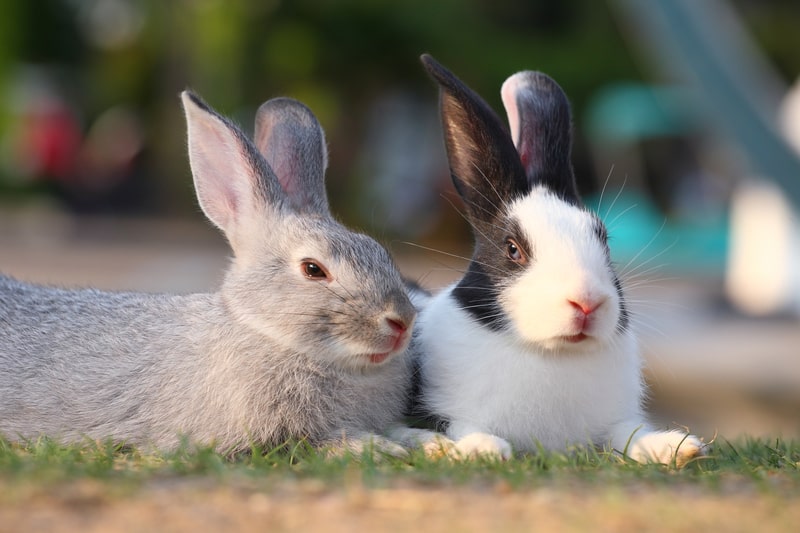
23. Babies at Birth
Rabbits are born blind and naked. They remain in a fur-lined nest during the first few days for warmth. On the other hand, hares are born with open eyes and body hair. They can even run just a few minutes after birth.
24. Grooming
Rabbits make it a point to stay clean, so they rarely need a bath. They will groom themselves and their bonded partner a few times each day.
25. Breeding
Rabbits breed three to four times a year, but only 15% of babies make it to their first birthday. The high reproduction rate assures survival of the species.
26. Age of Reproduction
Male rabbits can start reproducing as early as 7 months, while females can get pregnant after just 4 months. A single doe and her offspring can produce roughly 800 rabbits in a single year.

27. Avoid Overpopulation
Given their high reproduction rate, overpopulation can be a big problem for rabbit pet owners. Spaying females and neutering males are among the surest ways to avoid this.
28. Easier to Train
Male rabbits have obnoxious behaviors such as spraying and frequent aggression against other rabbits. Neutering them will stop these. In addition, both spayed females and neutered males are easier to train.
29. Better Companions
Rabbits long for companionship. Male and female rabbits go well together, but the pairs are calmer without the need to breed. They become more loving and dependable.
30. Largest Rabbit Litter
The largest litter recorded for rabbits is 24. This has been achieved several times by pet rabbits in New Zealand, Canada, and Cyprus.
Characteristics
31. Baby Rabbits
The baby rabbits are called “kits” or “kittens”. These kits grow quickly. They depend on their moms for only few weeks before they start taking care of themselves.
32. Cooling Down
When it gets hot, rabbits sweat through the pads of their feet. They may also stretch their ears to cool down or fold these to stay warm.
33. Happy Rabbits
Listen closely. A content and relaxed rabbit may purr just like a cat. Meanwhile, excited rabbits may jump, twist, and kick in mid-air. Give them lots of space, toys, and food to stay happy.
34. Natural Enemies
In the wild, rabbits are keen to avoid cats, dogs, lynxes, badgers, bears, and foxes which love to hunt them. They are also on the lookout for snakes, raccoons, minks, weasels, owls, ferrets, hawks, falcons, and sparrows.
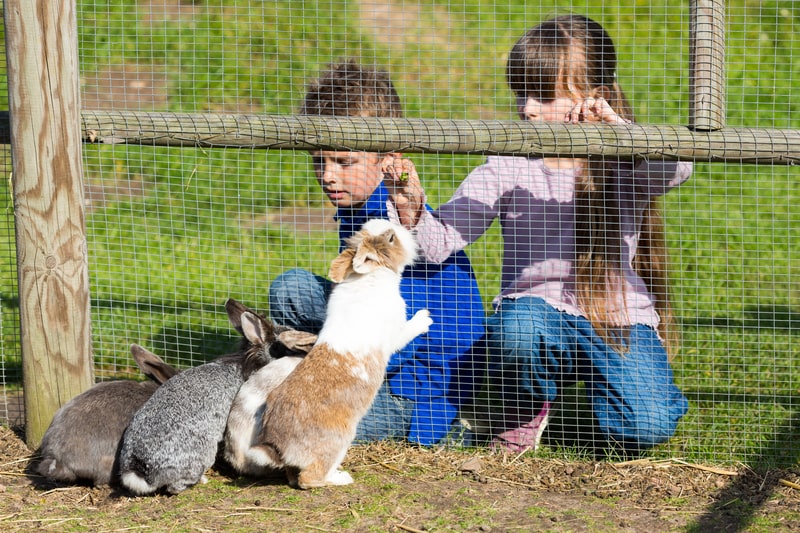
35. Communication
Rabbits can communicate through scent, such as leaving their urine and feces in certain areas to mark where they’ve been. They may also talk to each other using body postures and quiet vocalizations.
36. Habitat
Rabbits can live in different types of places thanks to adaptation. In the wild, they can be found in meadows, forests, woods, deserts, grasslands, and wetlands.
37. Anxious Bunnies
Rabbit can easily get scared and jump away, so be careful not to startle them. If you have these as pets at home, avoid picking them up or holding onto them. Be mindful of their mood.
38. Grooming
Rabbits may groom themselves obsessively, ingesting lots of fur that can lead to stomach upset. Owners can groom their rabbit weekly with a pet brush to prevent this behavior.
Unique Behaviors
39. Binky When Happy
Rabbits are expressive creatures. You will know that they are happy when they do the “binky”, a behavior in which they jump in the air, twist their body, and spin around.
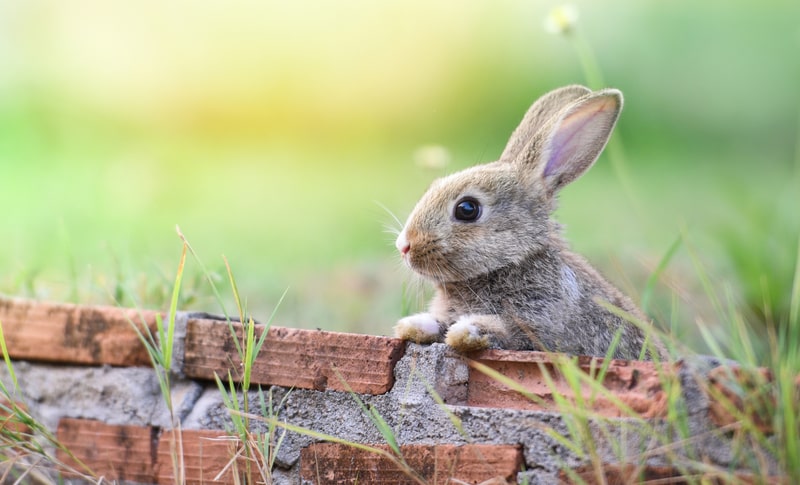
40. The Trickiest Rabbit
Like other house pets, rabbit can be trained to perform tricks. The record for the most tricks in a minute is 20. It’s held by Taawi the Rabbit from Finland.
41. Underground Tunnels
In the wild, European rabbits burrow and live underground in tunnel networks called warrens. Their whiskers help them determine whether they can fit through holes so they don’t get stuck.
42. Rabbit Habitat
Wild rabbits dig burrows in a variety of habitats including woods, meadows, deserts, forests, grasslands, and wetlands. Rabbits native to southwest Europe and northwest Africa have been introduced to other locations.
43. Social Hierarchy
Rabbits have a hierarchical system. One doe will dominate all female rabbits and one buck will dominate all males. The dominant rabbits enjoy the best burrows, grooming from other rabbits, and first dibs on food.
44. Warning Signs
Rabbits are constantly on the lookout for predators. If they detect danger, they will warn others by thumping their hind legs before sheltering in a burrow.
45. Space Requirements
Rabbits will take as much space as they can get. After all, they love to run, jump, and dig. Pet cages should let them stand upright and stretch out when lying down.
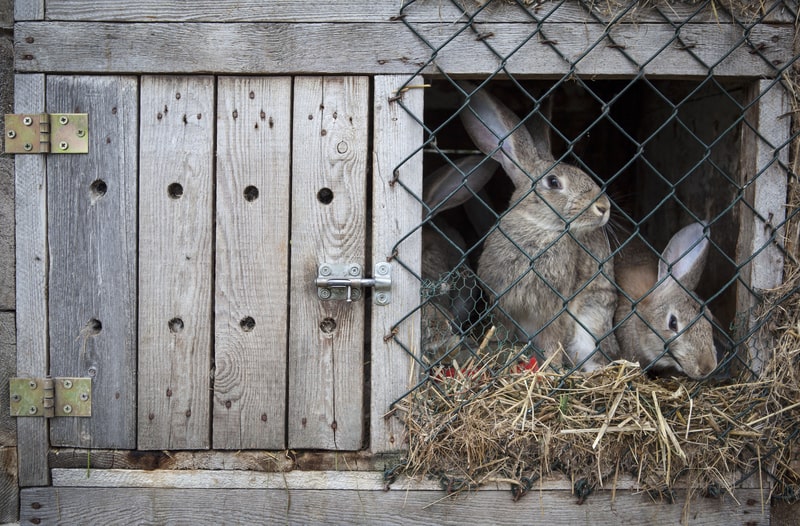
46. Ideal Shelter
Since rabbits are prey animals, they get anxious out in the open. Even domesticated rabbits like having a shelter with plenty of hiding places.
47. Pet Companionship
Both wild and domesticated rabbits love companionship. If left alone, a rabbit will likely get sad and bored. Pet owners should always keep them in pairs or groups for their wellbeing.
48. Pet Preferences
Pet rabbits may allow humans to stroke their fur but they may get scared if someone picks them up. Their instinct is to think they are being captured, so don’t insist if they resist.
Rabbit Trivia
49. Cruelty-free Logo
If you are a supporter of animal rights, then look for the rabbit logo on products such as cosmetics. Its presence on the label means that the item was not tested on animals.
50. Fertility Symbol
Due to their prolific reproduction, rabbits have become a symbol of fertility among several cultures. For example, Germanic peoples worshipped the fertility goddess Eostre who is often depicted with rabbits.
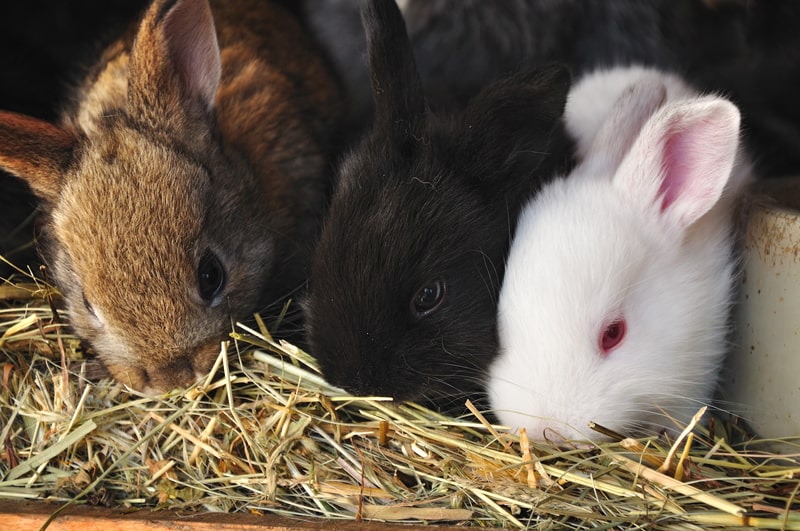
51. Celtic Tradition
Celtic stories feature rabbits that can communicate with underground fairies. They also thought that some people could turn themselves into rabbits, so they did not hunt these animals.
. . . continue reading on the next page
